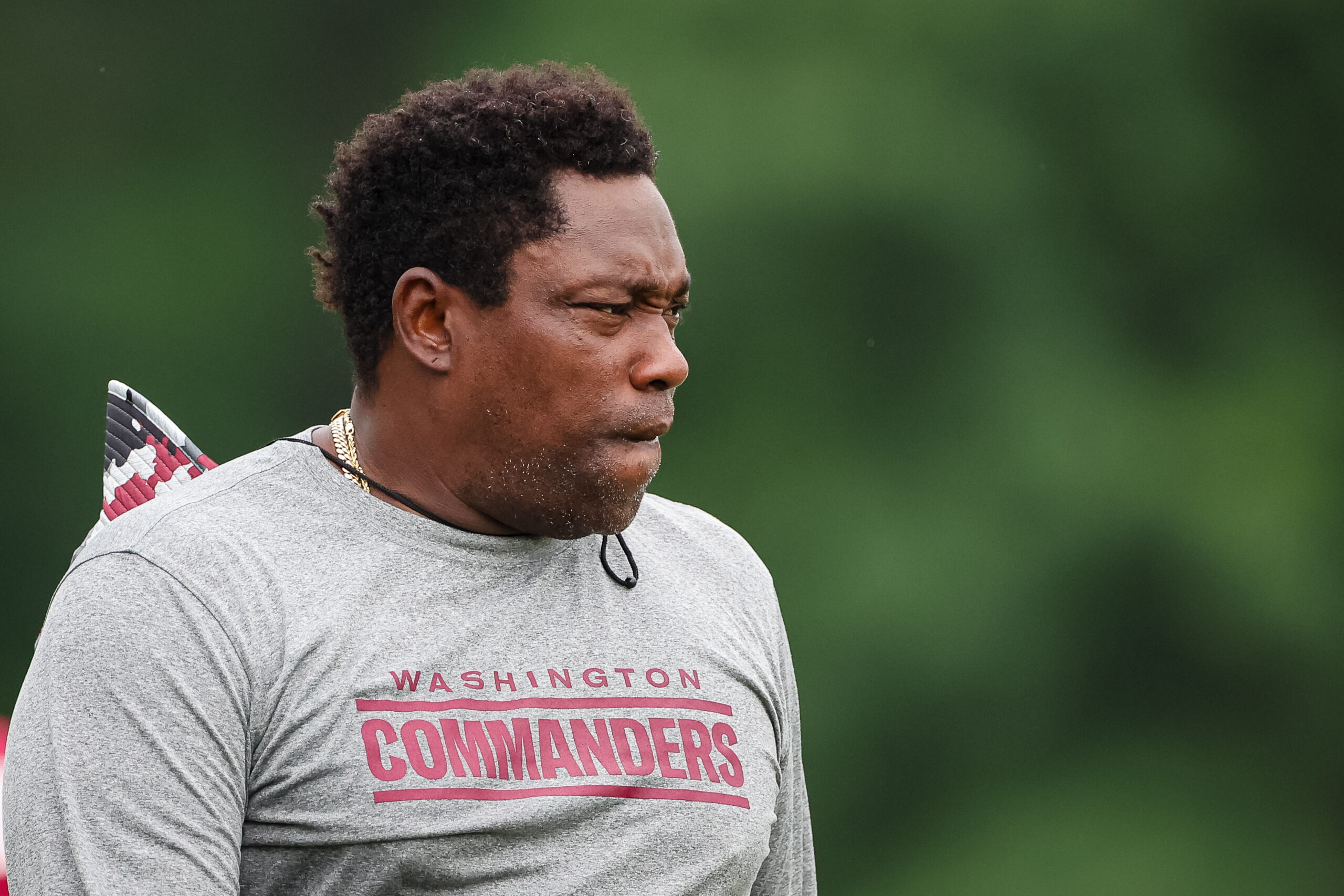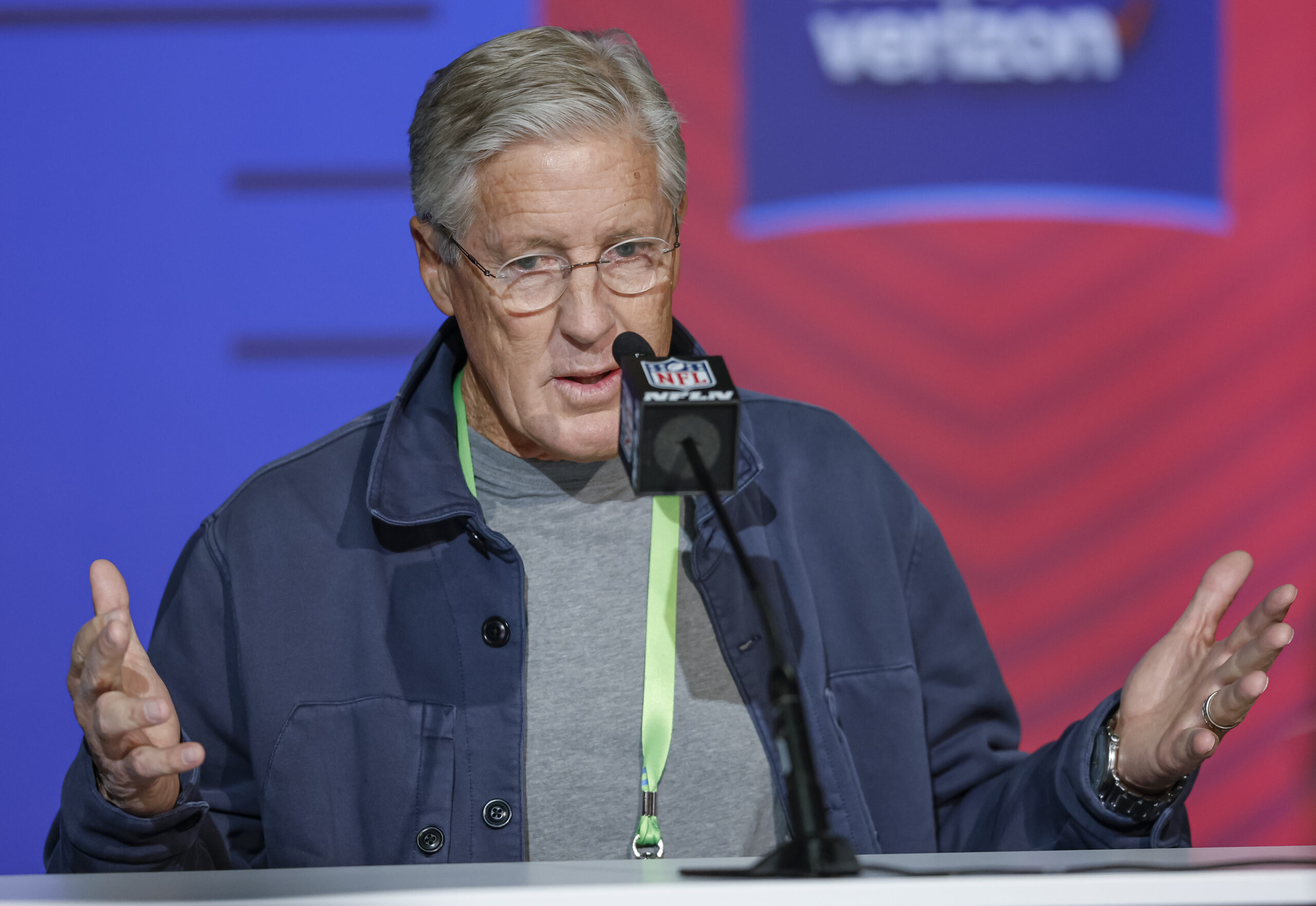As college football continues to evolve into a lucrative empire, and as its participating athletic programs become increasingly impatient on producing winning results, coaches are losing their jobs at historic rates. Despite the average coaching tenure hovering around the four-year threshold, though, the NCAA's Football Bowl Subdivision (FBS) can also be a land of second chances.
In 2013, "recycling" previously fired coaches is common practice. There are 17 active FBS coaches who have previously lost their jobs at another FBS school; two others are formerly fired NFL head coaches. The reasons for each coach's earlier dismissal, range from the typical (too few wins) to the outlandish (résumé padding) to the embarrassing (sexual misconduct, subsequent lying). In a world where team victories ultimately equate to financial gains, programs appear more than willing to re-shuffle the deck and offer a coach a mulligan.
Unless, of course, said coach is black. Then the numbers dwindle—all the way down to one.
Throughout the long and winding history of college football, Tyrone Willingham remains the only black coach to ever be fired from an FBS head-coaching job and re-hired at another FBS gig. He serves as a popular talking point addressing the sport’s discouraging track record of minority hiring practices. Willingham, who was fired at Notre Dame with a 21-15 record before getting his second shot at the University of Washington, is also the only minority coach to hold three separate head-coaching jobs at college football's top level. If those come across as trivial statistics, they shouldn't—the 59-year-old is one of only 42 full-time African-American head coaches in FBS (formerly Division I-A) history. The field is limited.
Jon Embree knew those facts when he sat down behind a microphone on November 26th. In that moment, he knew the odds were severely stacked against him.
——————-
At the press conference following Embree's dismissal as Colorado's head football coach, the 47-year-old addressed the elephant in the room, the lingering statistic that follows the firing of any one of the disturbingly low number of black coaches in college football. “You know we don’t get opportunities. At the end of the day, you get fired and that’s it, right, wrong or indifferent,” said Embree who is now coaching tight ends for the NFL’s Cleveland Browns. “Tyrone Willingham was the only one who got fired and got hired again. We get bad jobs and no time to fix it.”
(It should be noted, though, that the numbers here can be a bit misleading: Jim Caldwell went on to become a head coach at the NFL level for the Indianapolis Colts after being fired at Wake Forest. Dennis Green, who coached at Northwestern and Stanford, also reached the NFL head-coaching ranks after holding two college jobs.)
In many ways, Embree was not the quintessential spokesperson on the imperative issue of athletic programs’ hiring practices—after all, he received his job at his alma mater with no prior head-coaching or coordinator experience before going 4-21 in his two seasons—but the message rang home loud and clear. The opportunities for black coaches are limited in quantity and quality. As a result, in one of the nation’s most volatile job markets, the number of black coaches continues to hover in the mid-teens despite young African-American men composing the majority of FBS rosters.
Looking back through the careers of the exclusive fraternity of 42, the theme remains consistent: either attempt to move up the coaching ladder or become yet another statistic. Only two black FBS head coaches (Caldwell at Wake Forest, Tony Samuel at New Mexico State) have coached at the same school for at least seven seasons. Both men made it eight campaigns before getting fired.
Currently, Ron English of Eastern Michigan is the longest-tenured black head coach at the same FBS school. He was hired in 2009. Overall, the average tenure of the past eight minority coaches to be fired? Less than three seasons.
While athletic programs are quicker now than ever to terminate a coach’s contract, regardless of ethnicity, there is a fundamental distinction separating minority coaches. To steal a point from Sports Illustrated’s Stewart Mandel, the difference is that when Derek Dooley or Tom O’Brien are ousted, the sport loses two of its 100-plus white head coaches; when Embree, Joker Phillips (formerly at Kentucky) or DeWayne Walker (formerly of New Mexico St) are fired or resign, the sport loses one-fifth of its black coaches.
Exacerbating the problem, of course, as Embree pointed out in his parting press conference, is that if a black head coach does not succeed in that limited two- to four-year window, his chances of reclaiming one of the 124 major college coaching jobs is highly unlikely.
It may seem easy to point to the career-losing records of many black head coaches as viable cause for the lack of consideration for future positions, but accounting for the low success rate of any coach given a restricted time frame to turn around a program, that argument is insubstantial. While many of the 17 active white head coaches that have been “recycled” boast career-winning records, that isn't always the case—and it wouldn't matter if it was.
For example, there are former black head coaches with winning records and impressive résumés—Randy Shannon helped Miami pick up the pieces of the Larry Coker era; Karl Dorrell posted a winning record at UCLA at the pinnacle of USC’s dominance—who have never been handed the keys to another program. There are two separate playing fields on football’s sidelines. It’s been that way from the beginning, ever since Willie Jeffries took the head job at Wichita State in 1979, becoming the first black coach in Division I-A history.
Contrasted with active white coaches, would a black coach have survived to see another FBS job following a scandal like Bobby Petrino at Arkansas or lying on his résumé like George O’Leary did with Notre Dame back in 2001? Would a minority coach even make it past the pseudo-controversy surrounding Mike Leach at Texas Tech? Would a black head coach get another opportunity after running a national power into the ground, i.e. Coker, Rich Rodriguez (Michigan) or Charlie Weis (Notre Dame)?
Jon Embree—and history—thinks not.
——————–
A decade ago, the NFL officially adopted The Rooney Rule, a hiring practice requiring all 32 teams to interview at least one minority candidate for open head-coaching vacancies. Since the rule went into effect in 2003, the all-time number of minority NFL coaches has jumped from six to 18. College football and the NCAA have no such rule.
FBS athletic programs—operated primarily by white males, according to a November study (and common sense)—act on their own accord during coaching searches, many of which end with predictable results. This past offseason, there were 30 head-coaching openings at the FBS level. Black coaches filled three vacancies; of the three, only Kent State’s Paul Haynes is a first-time head coach. Haynes is No. 42. Willie Taggart (South Florida) and Darrell Hazell (Purdue) were already a part of the list, having succeeded during previous stints at Western Kentucky and Kent State, respectively.
Somehow, according to the Black Coaches Association’s annual report card, hiring practices in Football Championship Subdivision (FCS), Division II and Division III are even less diverse than their FBS counterparts.
So, would a Rooney-Rule-esque mandate help alleviate the problem? It’s possible, but the NFL’s own program is far from perfect. While the overall numbers suggest progress since 2003, 13 general manager or head-coaching positions became available at the NFL level this offseason—all were filled by white men. As prominent figures such as Tony Dungy and Herm Edwards have pointed out, having the Rooney Rule provide a token interview is neither the intent nor the goal. Black coaches with superior résumés have interviewed for big-time college jobs before, too, only to be passed over for a lesser candidate.
Initiating such a rule certainly would not hurt the chances for minority hires, especially if it extended to athletic director and coordinator positions. But, with the NFL’s numbers in decline as well, it’s impossible for the NCAA to follow by example in this instance.
In that November study, the Institute for the Diversity and Ethics in Sport at the University of Central Florida found that 100 percent of FBS conference commissioner positions and 84 percent of athletic director positions, were held by white males at the beginning of the 2012-13 academic year. With an in-depth look, it was found that this trend trickled down throughout universities and their athletic departments.
In 2013, that select group calls the shots in college football—and it’s slanted drastically toward one extreme.
ESPN columnist Jemele Hill, recently addressed a similar issue during a live chat following the Content of Character forum, noting the prevalence of “economic racism” continually plaguing college football.“(It) is an appalling statistic,” Hill said of Willingham being the only re-hired black FBS coach. “I think a lot of these athletic directors are, quite honestly, frightful that their donors and their communities won’t continue to support their schools financially if they hire a black coach. … So what I think they’re doing, though, is using their economic situation as an excuse to continue what I feel to be racist practices.” The numbers reflect a resurgence of such sentiments: there are 13 black head coaches at the FBS level entering the 2013 season, down from 15 in 2012 and 17 in 2011. While each coaching search needs to be evaluated on its own merits, the numbers suggest regression instead of progress.Ironically, the on-field product suggests the exact opposite.
——————————-
Success typically breeds imitation in sports, positive results weighed more heavily than innovative practices.In many regards, here is where the further decline in the number of black head coaches this offseason fluctuates between disheartening and confusing: the 2012 season was arguably the most successful campaign in the history of black FBS coaches.
The collective effort not only raised eyebrows, it made headlines. Featuring more minority coaches than ever—in other words, the largest single-season sample size of all time (18)—the success rates jumped off the charts. Two black head coaches (Stanford’s David Shaw and Louisville’s Charlie Strong) guided their teams to BCS bowl wins. Texas A&M’s Kevin Sumlin not only groomed a Heisman trophy-winner while leading a top-five team, but he did it in his first season at the helm in College Station. Another, James Franklin of Vanderbilt, took another step in one of the sport’s greatest turnarounds by leading the Commodores to their second straight bowl game.
It was a banner year, to say the least.
The payoff: two fewer black coaches will man the sidelines next season. Simply put, the black presence is too prevalent in college football to feature such a wide disparity between those running the show and those playing the game. African-American head coaches are succeeding at the FBS level like never before; the numbers need to catch up—and soon.
Watching Jon Embree’s press conference—the tears, the defiant and emotional tone, the weighted pauses separating difficult words—the increasingly desperate nature of black coaches in college football was appropriately personified. Forget his 4-21 record; Embree unleashed sentiments that have been pent up for decades. Equal opportunity exists only in theory on college football’s sidelines, not in practice, and at the heart of every important issue there comes a breaking point.
Sure, the possibility of a second chance remains. But it’s 2013, and that’s not good enough anymore. With the total number of black FBS coaches once again on the decline, and head coaching opportunities resembling little more than trial runs, the demand for accountability from college football’s hiring practices is approaching its tipping point: in a results-oriented world, athletic departments must start producing results.
Maybe it will take a national championship or a strict, enforceable Rooney Rule, but either way, there is too much conversation and pushback against the current state of minority hiring for drastic change not to be on the horizon.
At a certain point, possibility needs to become reality.



